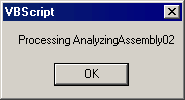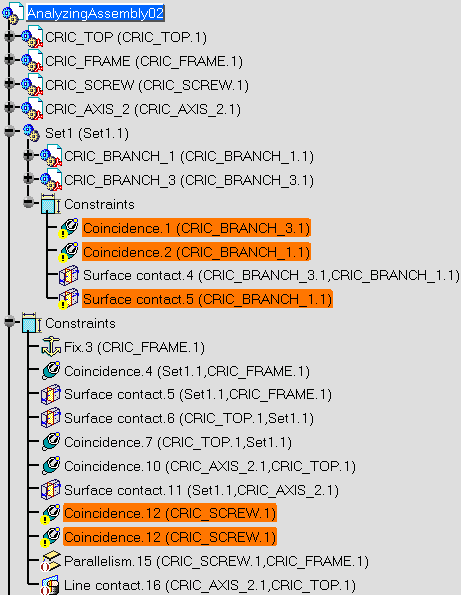Note that a broken constraint is not a data corruption, it is a normal state, supported in CATIA, but the design of the ENOVIA integration constraints considers this state as a trouble.
Needed Options
Before You Begin
- This macro scans recursively the assembly to identify its broken
constraints and put them into the selection to be managed:
- Broken constraints for which one of its related instances is missing are taken into account by the macro.
- Broken constraints for which only the geometry is missing, but not the related instance, are not taken into account by the macro.
Macro Usage
-
Launch the application.
-
Open the assembly to be checked (CATProduct document).
-
Launch Macro (Alt-F8 + SelectBrokenConstaints.catvbs)
-
Manage the broken constraints.
-
Save and close the document.
-
Close the application.
Result File Location
Example
-
Open the following document: Assembly_06.CATProduct
-
Run the macro.
The assembly name processed is displayed in a message box:

-
Click OK.
The number of broken constraints is displayed:

-
Click OK.
Broken constraints are selected in the specification tree:
